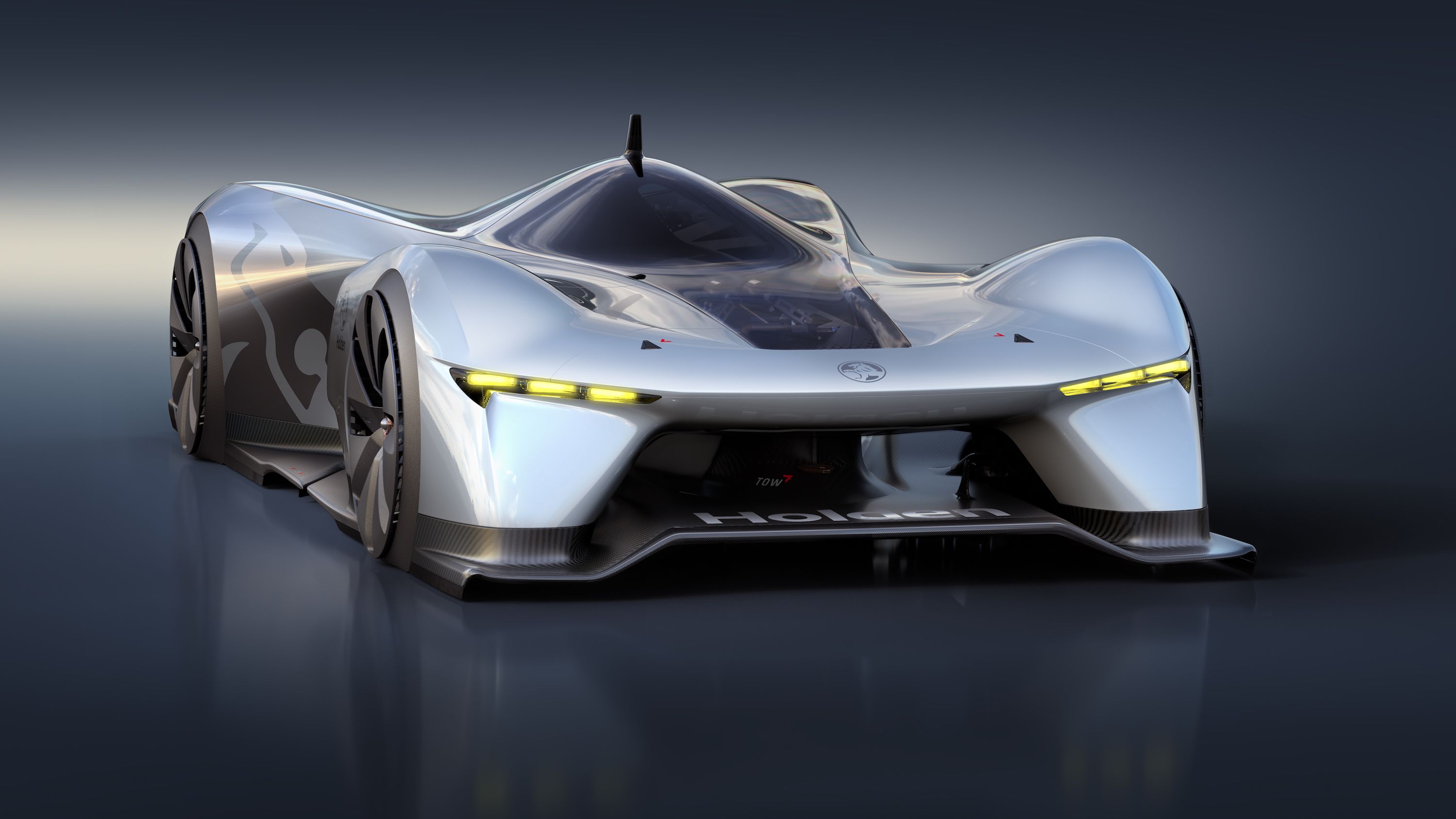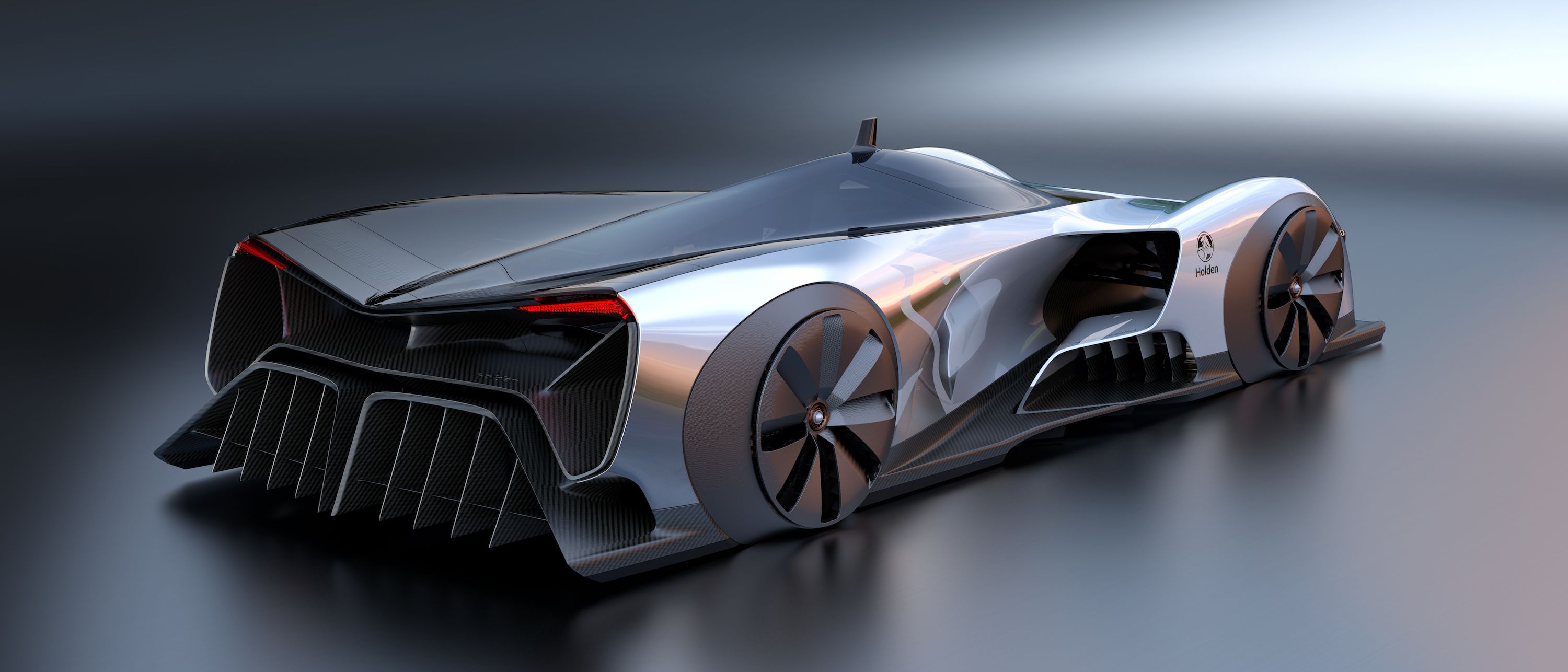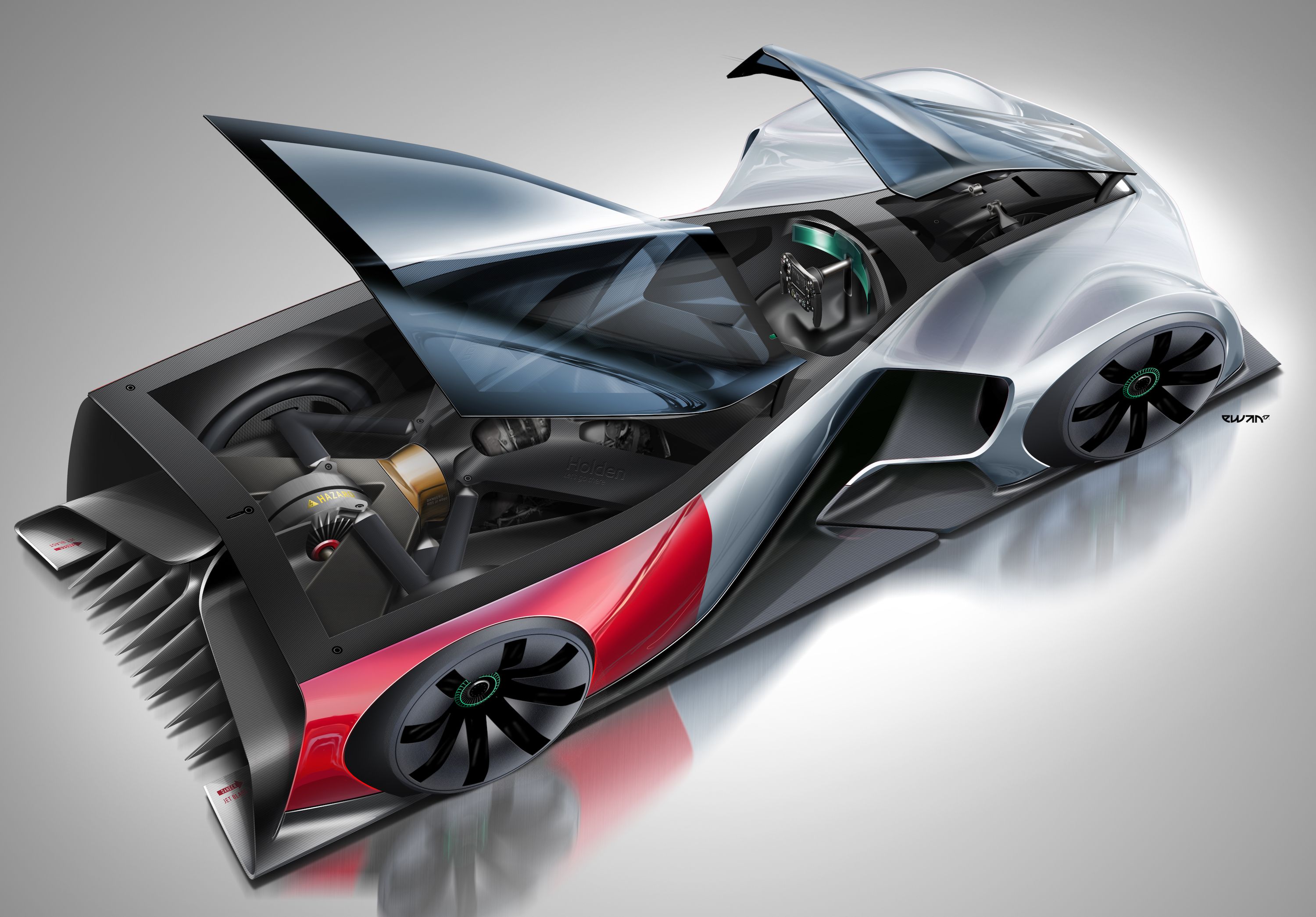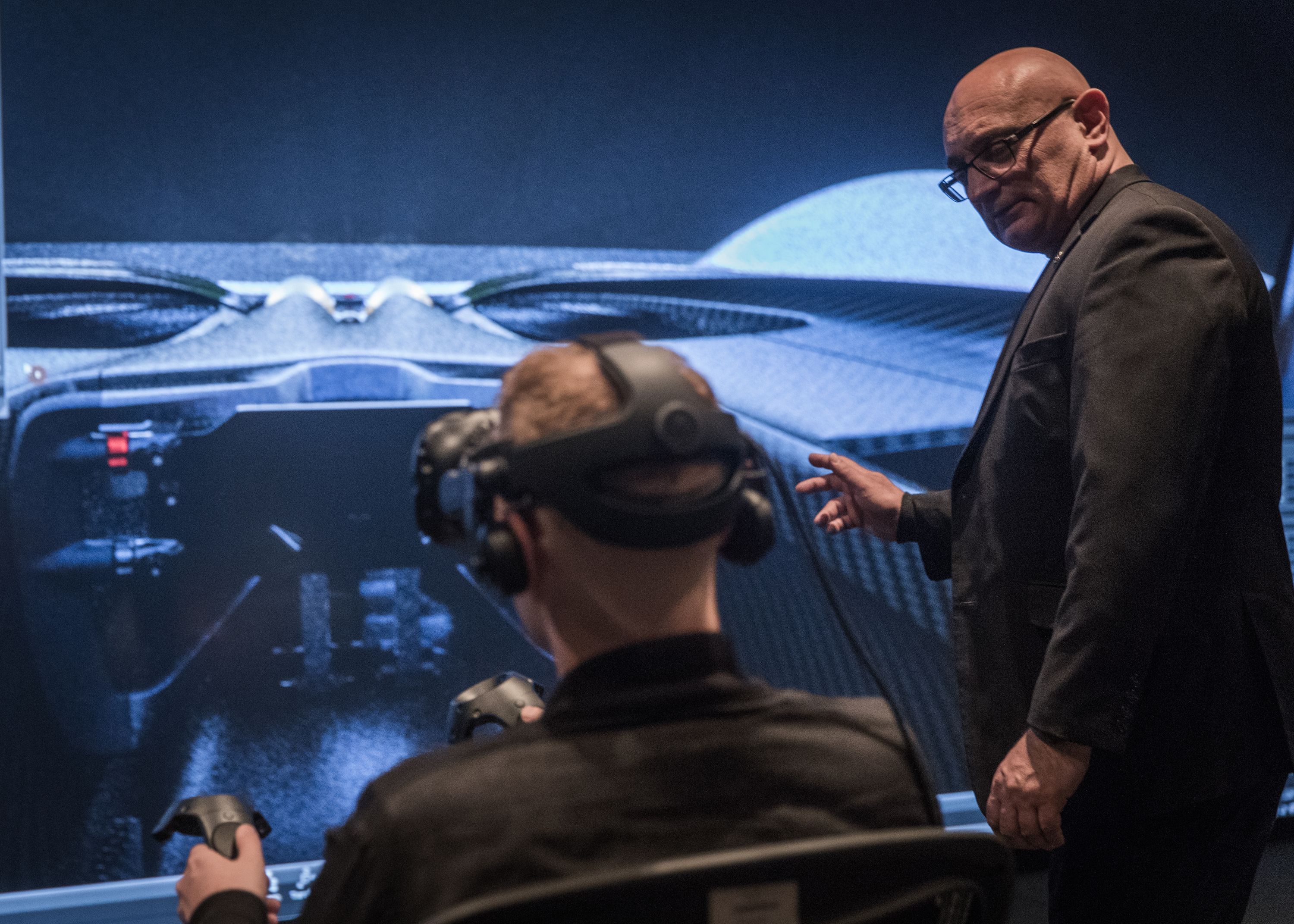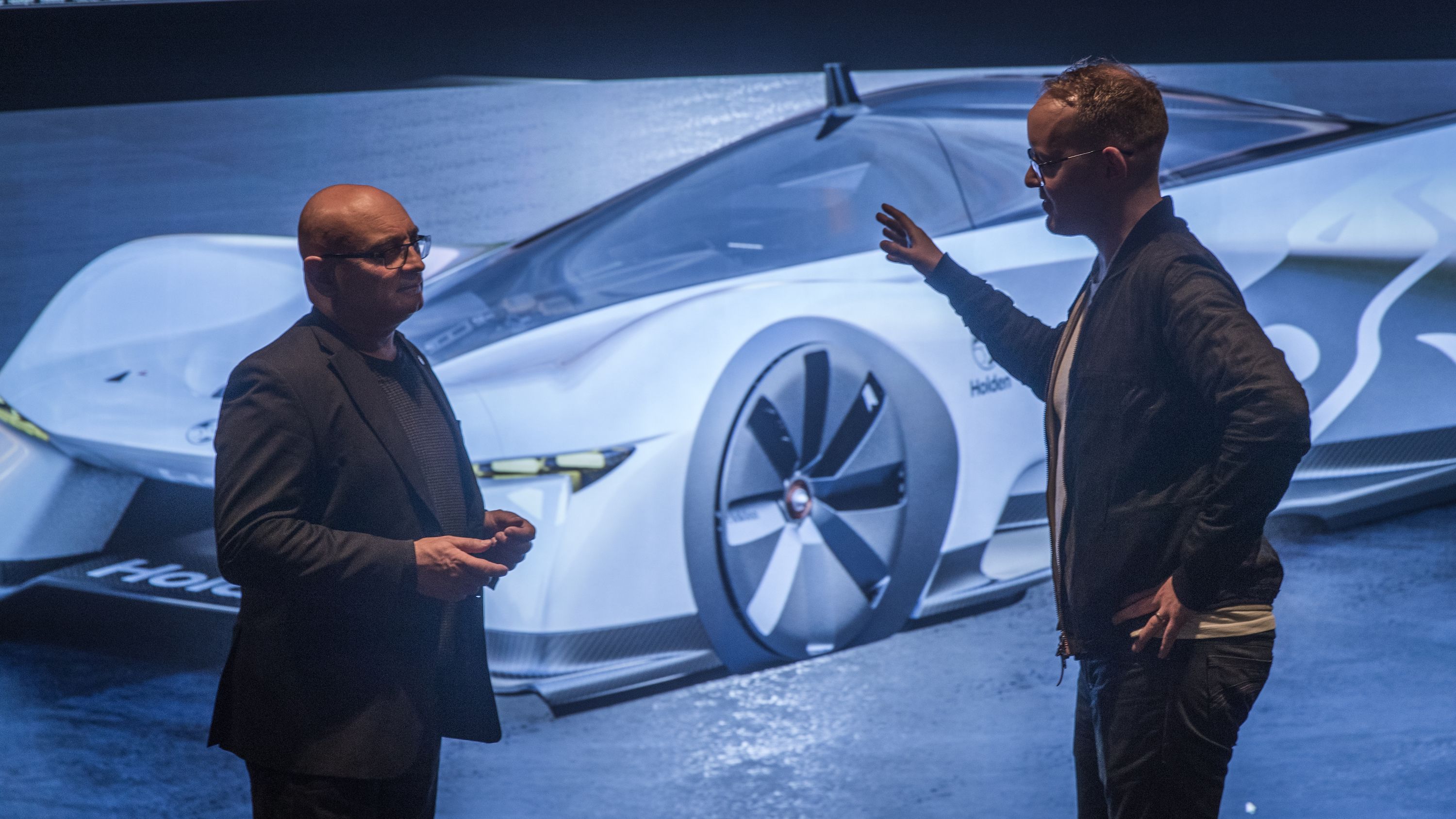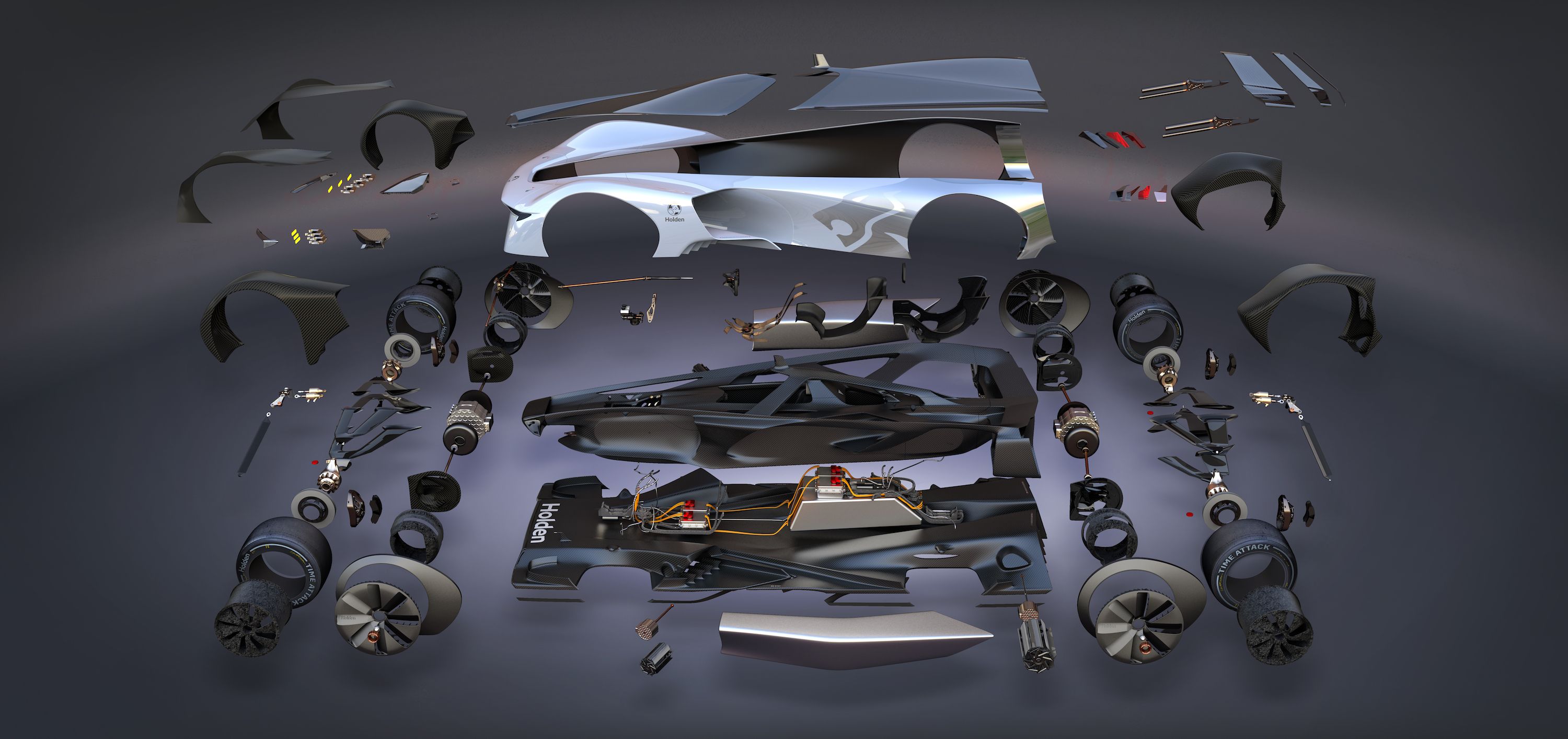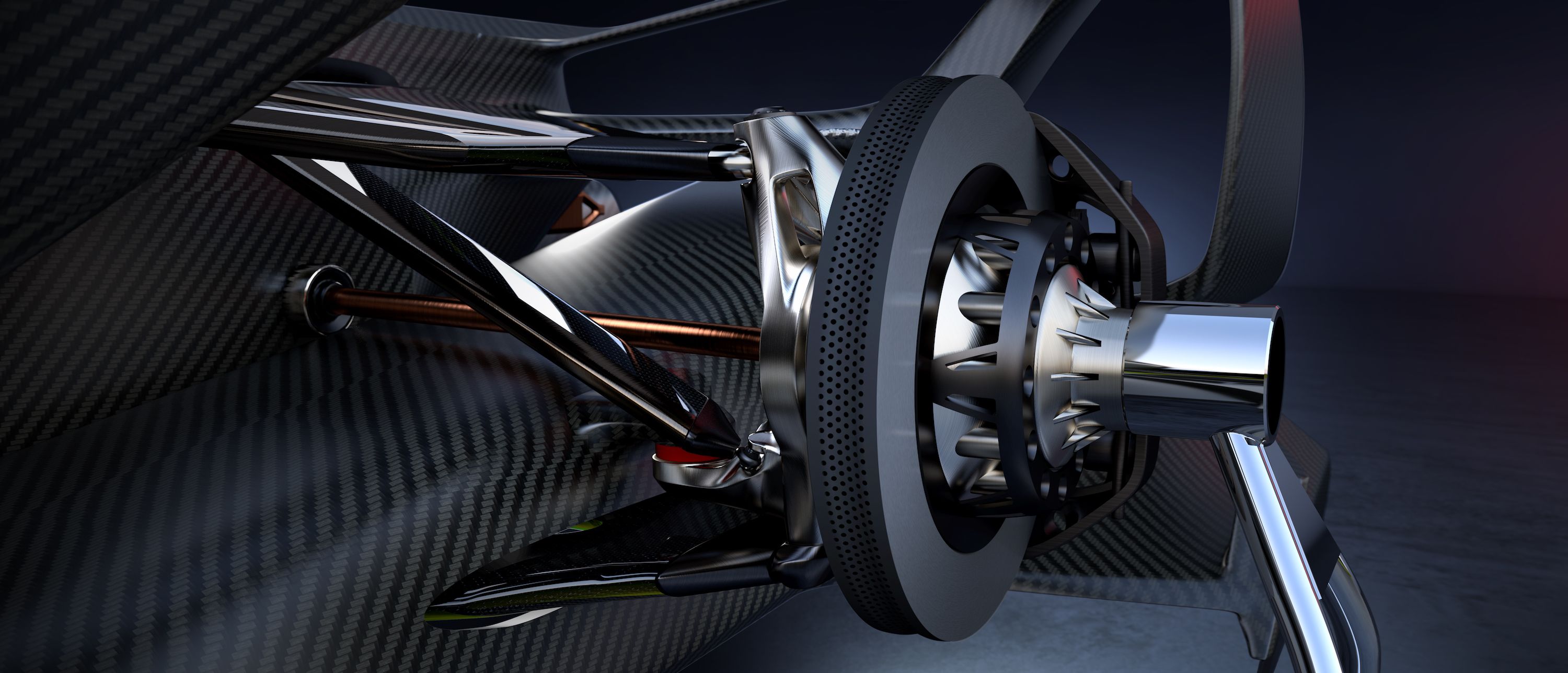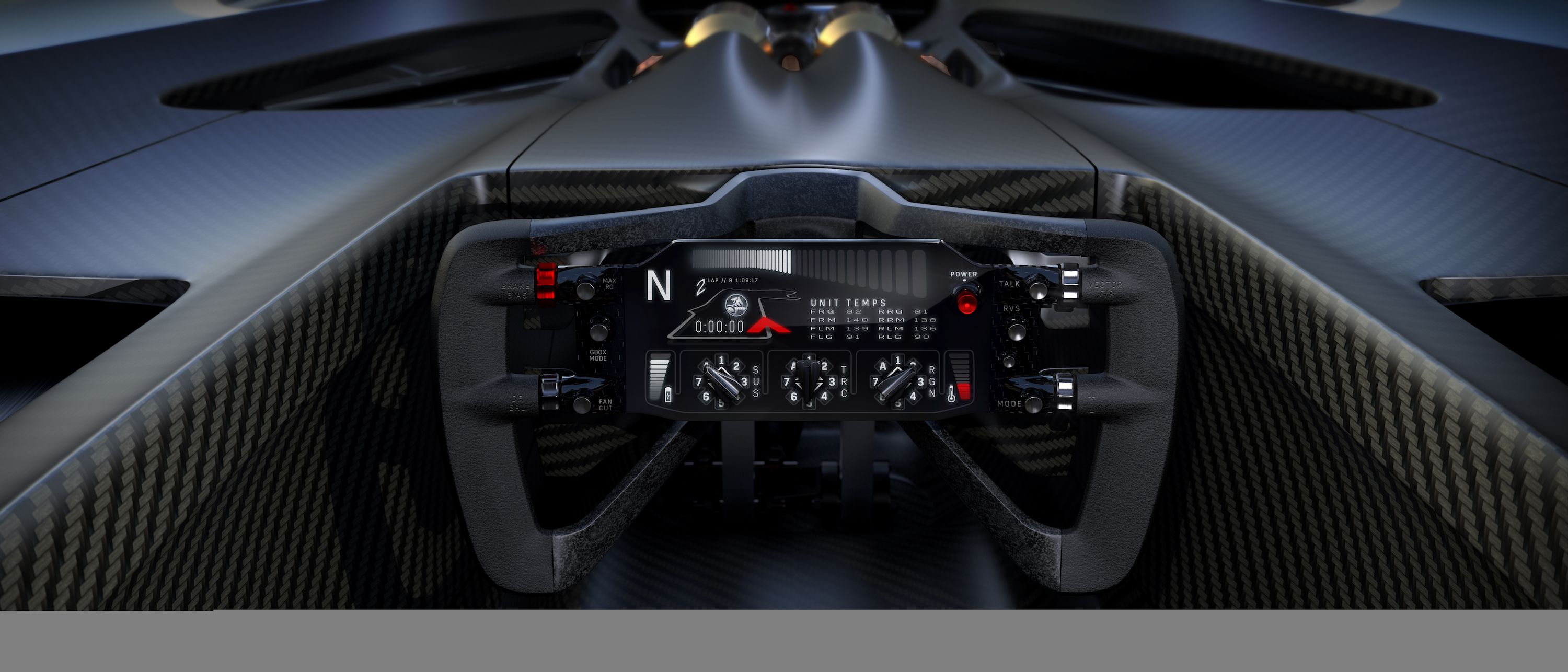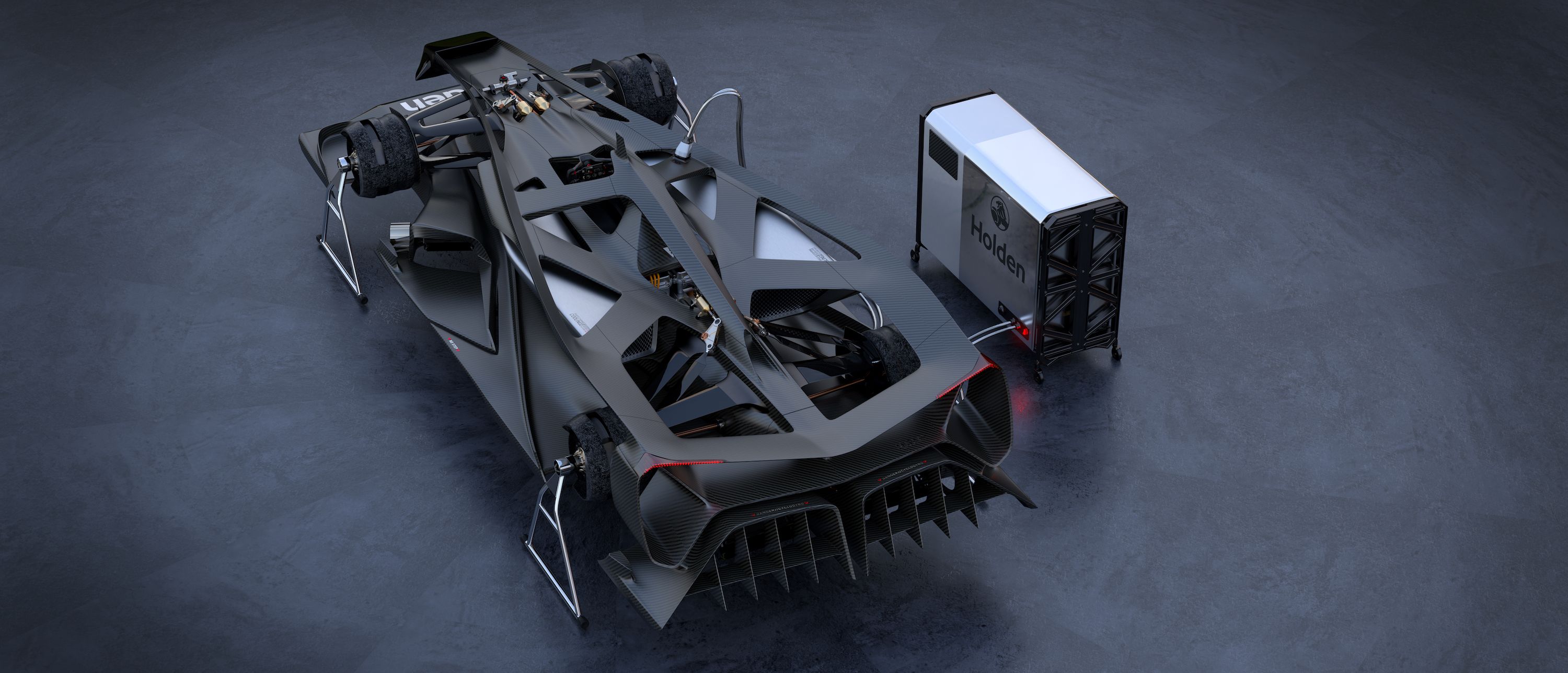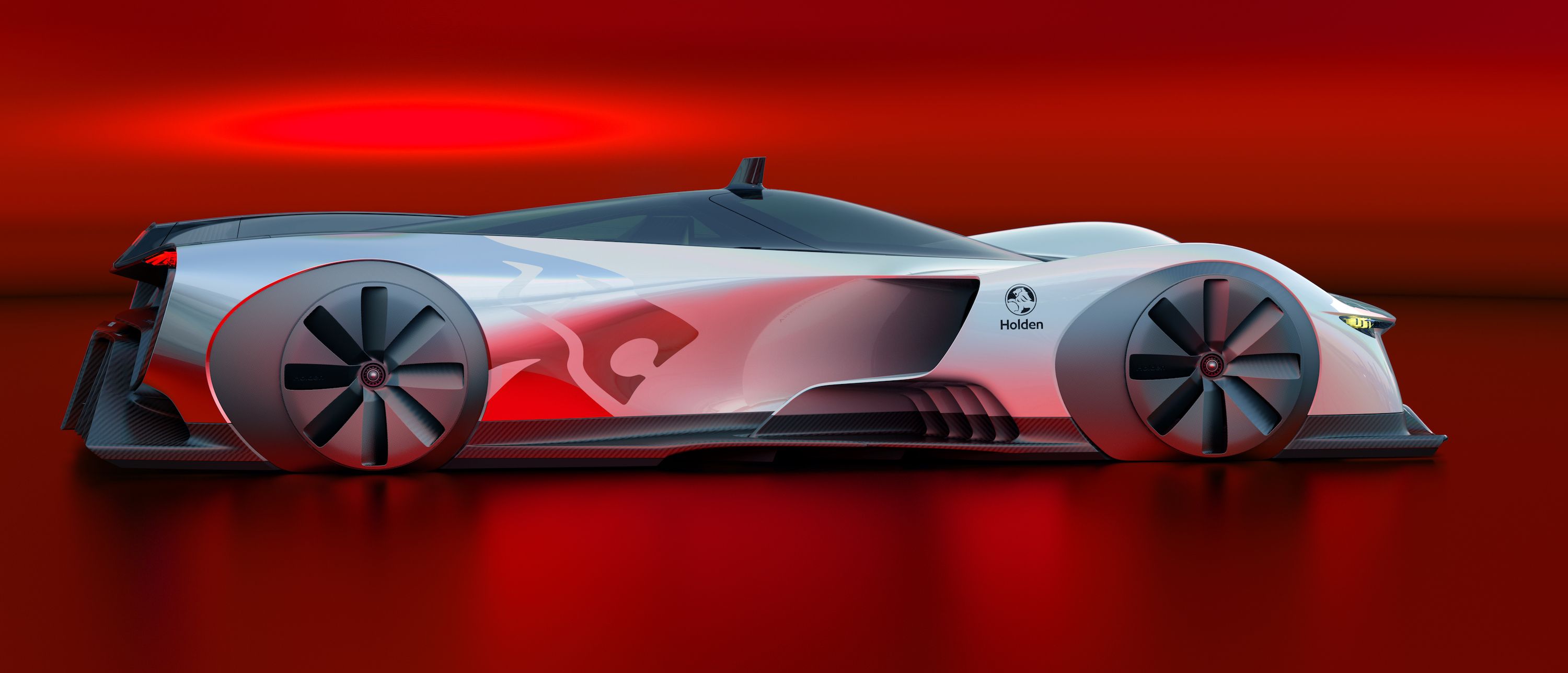Just when you thought nothing truly exciting could come out in 2018 with the Holden logo on the hood, here’s the Bathurst Time Attack Concept. It was developed as a futuristic race car to mark the 50th anniversary of the company’s first major win at Bathurst.
The R&D department at Holden, in Australia, set about proving that Holden isn’t just a badge GM slaps on the Buick Regal. So they came up with a groundbreaking concept that uses fans that direct airflow in order to improve downforce through each and every corner the car tackles. It’s low, wide, electric and it isn’t real. It’s similar to a Gran Turismo concept car without being one. But we wish they’d make it.
I mean, look at it. Check the tunnels that run on either side of the monocoque, the ginormous diffuser at the back, the rear wing, everything looking like it came from 2040. And it does, in a way, because all the tech that the AVD group crammed in it isn’t all here – yet.
2018 Holden Bathurst Time Attack Concept
- Make: Array
- Model: 2018 Holden Bathurst Time Attack Concept
- Horsepower: 1340
- [do not use] Vehicle Model: Array
<
2018 Holden Bathurst Time Attack Concept Exterior Styling
Remember the Holden HK Monaro GTS? Not many people to, but it’s an important model in Holden’s motor racing history. That’s because a yellow example driven by Bruce McPhee and Barry Mulholland – for just a lap – won the Hardie Ferodo Bathurst 500 race half a century ago. They weren’t among the favorites since both Ford and Holden brought, for the first time in the event’s history, works teams at Mount Panorama. Defying the odds, McPhee marched to the front thanks to a clever tire strategy and kept himself at the fore until the checkered flag fell and the No. 13 crossed the line as the winner.
It was the first major win for a Holden in what would become today’s Bathurst 1000 race, arguably the biggest four-wheeled racing event in Australia. To celebrate that victory, the Advanced Vehicle Design group within GM Holden Australia came up with a radical concept that envisions the Bathurst-dominator of tomorrow. It’s called the Bathurst Time Attack Concept because, unlike the Monaro of 50 years ago, it’s meant to obliterate the stopwatch, not run a whole endurance race.
He then added in the same statement that “the Time Attack Concept racer is an illustration of how we can utilize cutting-edge technology to develop transportation solutions for the future. You can see from the extremely detailed approach to incorporating the advanced technology in our Time Attack Concept racer that this is more than just a visual exercise.”
But just stick to the visuals for a moment, shall we? What we have here is a brazen interpretation of how the ultimate race car with bodywork would look like. The front end is dominated by that huge opening which creates two tunnels that run on either side of the monocoque and exit just behind the front wheels. The thin, yellow-tinted, laser headlights sit on the outer edges of the car’s blade-like nose with the wheel arches themselves bulging beyond the line of the headlights themselves. The bare carbon fiber splitter at the front is generous in size and highlights some clever underbody aerodynamics going on – the air being trapped underneath thanks to rubber skirt add-ons similar to those found on ground effect F1 cars of the late ‘70s and early ‘80s. In fact, the whole of the monocoque is made out of carbon fiber which is also used in the making of the wing, the rear diffuser, and other components.
With huge wheels that feature incorporated fans, you’ll be forgiven if you think this car’s actually meant to fly off, not drive down the road. The huge air ducts on either side are completed by other inlets incorporated in the car’s side skirts. The entirety of the greenhouse is made out of glass which extends forwards to the tip of the bulkhead and rearwards over the engine – or where you’d expect the internal combustion engine to be in a hypercar. It actually widens at the back covering the whole rear section which actually is shaped like a V.
The rear end is actually a great big opening with the taillights hanging in the top corners. The huge trapezoidal diffuser and the active rear wing completes the outlandish aerodynamic package of the Bathurst Time Attack Concept.
2018 Holden Bathurst Time Attack Concept Interior Design
We get a view of the ultra-complicated Formula 1-inspired steering wheel, but that’s about it. We know that it seats only one person and that the seat itself features 6-point safety harness. We also know that, from the knobs on the wheel, you can control all the systems on the car via presets.
Knowing that you’d drive this car wearing a full-on race suit, Holden devised an avant-garde helmet for it which can project 3D graphics onto the visor to enable graphics overlay in real-time. Essential technical information is provided on the visor in addition to the racing line and braking zone benchmarks. There’s also a camera mast on the roof which films everything you do out on track.
2018 Holden Bathurst Time Attack Concept Drivetrain And Performance
The body of this concept is made or, to be more precise, would be made out of carbon fiber and Kevlar, same for the underbody which features flexible co-molded membranes at body and chassis junctions. The monocoque is mounted to the suspension uprights at all around, which enables full aerodynamic load to be applied directly to each wheel individually. The weight of it all, thanks to ultra-light materials, stays at below 2,000 pounds.
Each of the four motors has its own 3-speed gearbox which means that it could, theoretically, launch itself from 0 to 62 mph in just 1.25 seconds. But its party piece is the four cyclo-gyro fans that are individually controllable and that accelerate airflow through the four venturi tunnels to enhance downforce at lower speeds through corners. Basically, depending on the corner, the air is directed in such a way to help keep the car “on rails”. This means that the center of pressure is always under control. The fans are powered by 4 Switch Reluctance Motors (SRM), each up to 50kW, that spin at 50,000 rpm.
The suspension is by carbon fiber double wishbones on all four corners with titanium uprights. The ride height is adjustable from the cockpit. The carbon fiber rims themselves are 18-inch in diameter and have active wheel fairings supported by a Kevlar/Elastane woven skin. This enables consistent performance whilst supporting full wheel steering and suspension movement. Lastly, the brakes will be warmed up electrically in the pits and feature KERS-like technology to recuperate energy on both axles.
Final Thoughts
Everything sounds incredible, then, but the concept will, most likely, never go beyond the 3D-printed model phase. At least, we can look forward to a future with more interesting projects coming from GM Holden Australia since “Holden’s recent announcement of the expansion of 150 new engineers to our Advanced Vehicle Development team means we have the talent, resources and technology to continue delivering to that charter,” added Richard Ferlazzo.
Further Reading
Read our full review on the 2017 HSV GTSR W1.
Read our speculative review on the 2019 HSV Commodore.

